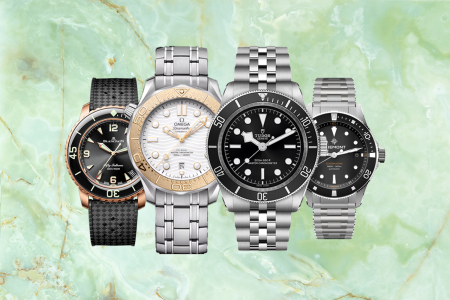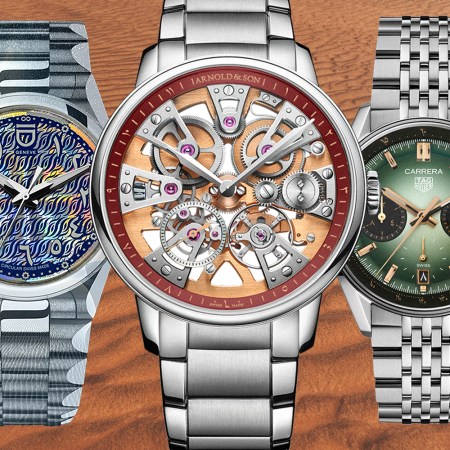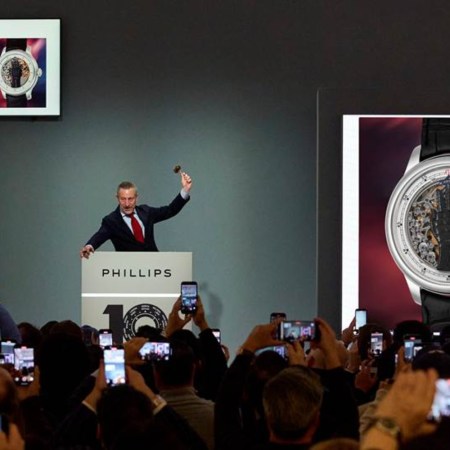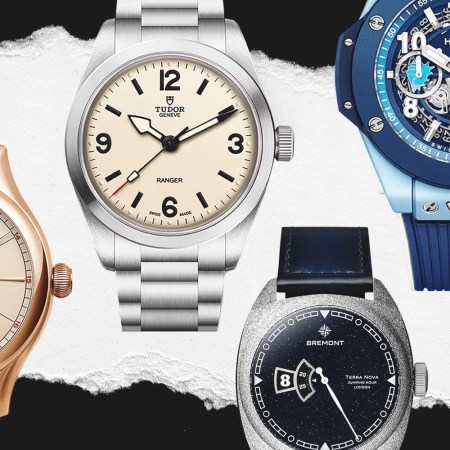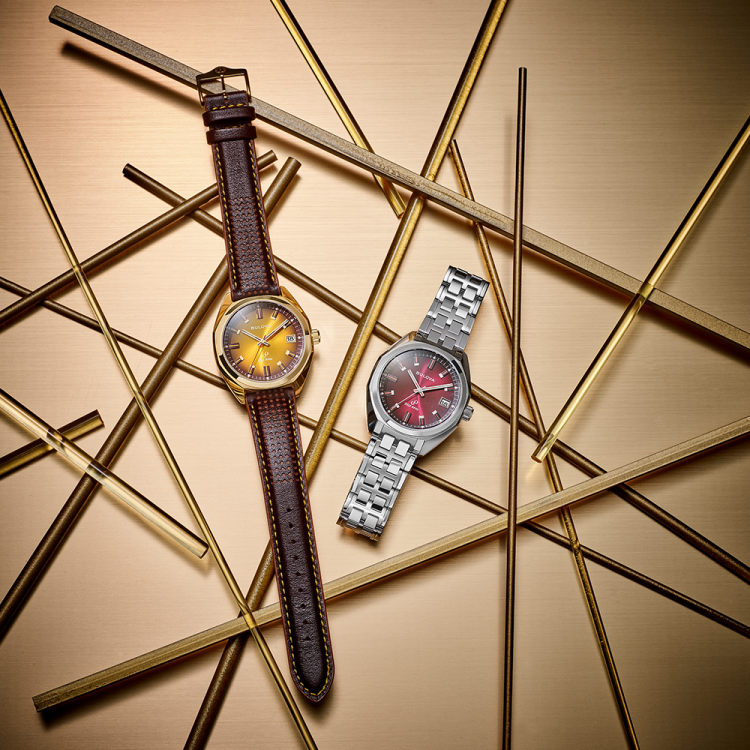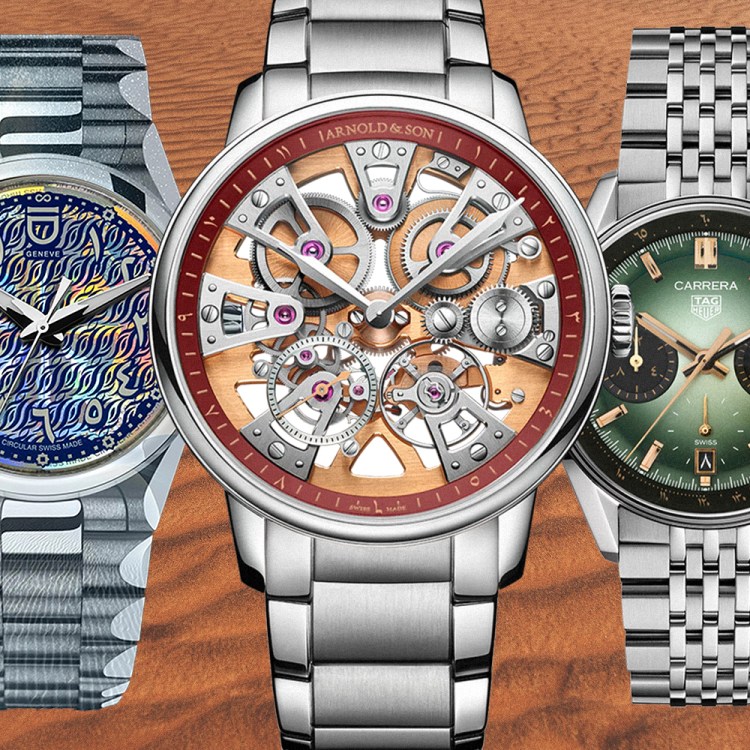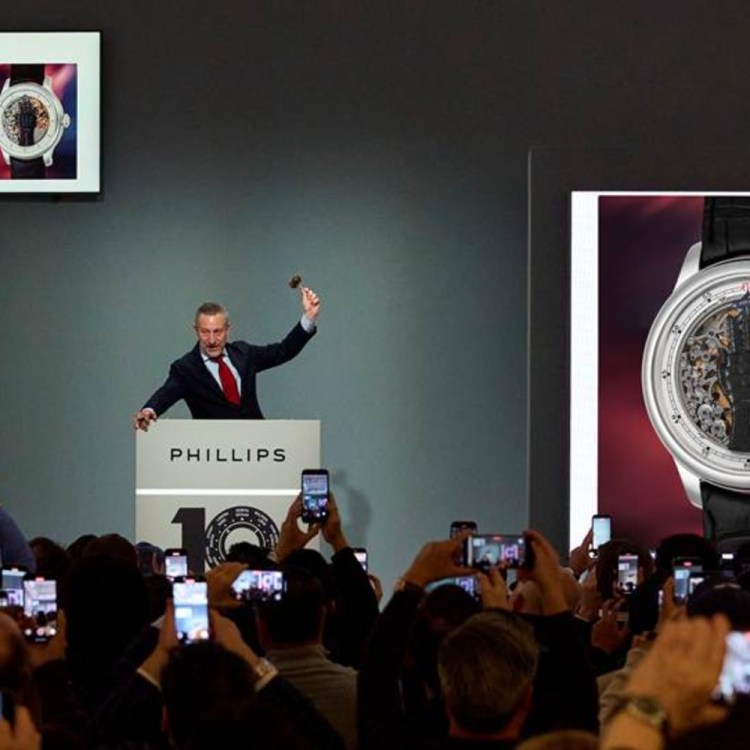Jaeger-LeCoultre thinks outside the horological box. The renowned Swiss luxury watch brand’s long-running Made of Makers Program involves collaborations with artists, designers and creatives from various disciplines outside of watchmaking. It explores and extends the dialogue between horology and art by partnering with minds who share Jaeger-LeCoultre’s values of creativity, expertise and precision. The program delves into new forms of expression through unexpected materials and media via the craft of each selected maker, imbuing a sense of community amongst talented, innovative and, most importantly, passionate artists. It is essentially a creative mashup between the storied watch house and the best creative minds. Individuals from previous collaborations include experts in art, gastronomy and music from around the globe. The works animate Jaeger-LeCoultre’s worldwide exhibitions each year, allowing audiences to engage in conversations about art and horology.
The Best New Dive Watches of 2024 (So Far)
Many of the year’s coolest seafaring timepieces are sub-$5KThis year, in tribute to the pursuit of precision that has been a central value of La Grande Maison since its founding almost 200 years ago, Chinese artist Roy Wang created three light-painting photographs and a stop-motion video. Wang, an artist renowned for his light painting, uses darkness as a canvas and light as his paintbrush. He creates images by shaping light in the air without visual guidance, relying solely on spatial and muscle memory. This unique art form requires Wang to wear all black and become invisible in the finished photos, ensuring that the light patterns stand out vividly. The artworks Wang created for Jaeger-LeCoultre demanded major adaptations to fit the tiny dimensions of watchmaking, requiring new, miniaturized light tools and mastering precise hand and wrist movements akin to the meticulous gestures of a watchmaker.
The resulting works are visually stunning photographs and a video displaying the juxtaposition of light and dark, requiring skill and precision, just as Jaeger-LeCoultre is known for. Inspired by Chinese tradition and Wang’s observations from visiting Jaeger-LeCoultre’s Manufacture in the Vallée de Joux, these one-of-a-kind creations, with their dynamic lines and vibrant shapes, celebrate the intersection of artistic innovation and horological craftsmanship and precision inherent in watchmaking. Flying Dragon pays tribute to the iconic Reverso, All the Best celebrates the intricacies of the Duometre watch calibre and Burning Flame pays homage to a 19th-century Jaeger-LeCoultre pocket watch. We spoke with Roy about the collaboration, his approach and how art and watchmaking are similar.

InsideHook: What is it about Jaeger LeCoultre’s heritage that informed you on how to approach this collaboration?
Roy Wang: It was totally unexpected but very flattering. Jaeger-LeCoultre contacted me by email, which initially took me by surprise — I had never imagined such a prestigious Maison would be interested in my work. They explained that they were looking for a light-painter to collaborate with for their Made of Makers program and had discovered my work through the Guinness World Records. From then, our collaboration started to flourish. Jaeger-LeCoultre presented me with the unique challenge of interpreting three of their timepieces through light-paintings.
You have created a unique, visually stunning new form of art and photography. Can you explain how you developed the smaller light tools for these photographs?
Typically, my light orbs are bigger than me, so I use my whole body to move. For this project, I had to recalibrate my technique to a miniature scale, which I had never tried before. The first step was to craft new smaller tools and lights, allowing me to paint tiny lines. My team and I then suggested incorporating elements from Chinese culture, such as the dragon for the Chinese Dragon Year. They loved the idea, but then the question was, how would I make a dragon so small? I had never considered working on this scale, so this project with Jaeger-LeCoultre pushed me to innovate within my craft and embrace this exciting challenge.
Initially, I aimed to employ visual dislocation and rotate the camera angle to capture the two balls and the dial in a single frame. In testing, a standard human-sized form was used to light-paint a ball of light. After the first exposure, the lens was covered and turned to focus on the pre-arranged watch as the foreground. Upon reopening the lens, light was applied to the watch, completing the effect of dual orbs on the timepiece through a single exposure from two perspectives. However, this method failed to authentically capture the desired essence, prompting a shift in creative strategy.
Subsequently, I developed a compact light painting device featuring a 0.5-0.8 mm diameter light source, driven by dual micro motors and powered by a 3V battery, enabling 360-degree simultaneous horizontal and vertical rotation to create the double light orb effect. This unique lighting technique enhances the allure of the Duometre.
Ruò praises the complexity of the Duometre double-winged watch movement. For these works, we engineered the smallest light source to complement the intricate design. The dual-ball method necessitates the use of the tiniest motors and 0.5-0.8mm light sources, operating in a dual motor rotation manner. The power system also utilizes the smallest button battery. This precision mirrors the meticulous craftsmanship of a watchmaking Manufacture, serving as the ultimate tribute.

Can you describe how you create these stunning images? How much do you rely on instinct, and how much of this is planned?
Light-painting art, a relatively recent art form with a century-long history, involves capturing and recording light’s trajectory through prolonged camera exposure. Although the process is invisible to the eye, it manifests in the image through the creator’s spatial and collected memory. Mastering light drawings is essential to achieving the desired final artwork.
I operate from behind the light, so I cannot directly see what I’m doing. I rely on my imagination and anticipate the final drawing, which requires a lot of practice to precisely remember the movement of the light and the positioning of my body.
Similarly, in rugby training, we would repetitively practice specific techniques — such as passing and tackling — countless times to ingrain them deeply. Once these skills become second nature, they enhance our performance during a game. The same principle applies to light-painting. Initially, creating a dragon took over a hundred attempts to achieve a result I was satisfied with. Now, I can craft the dragon with just a few practices.
The Reverso is one of the most iconic watches of all time, known for its reversible face. Is there some correlation with why you chose the Flying Dragon for this timepiece?
During the Spring Festival, I encountered Jaeger-LeCoultre’s release of the customized version of the Reverso Year of the Dragon on Instagram. The dragon image on its back inspired me, so I proposed painting a Chinese dragon on the Reverso’s back. Excitedly, I submitted our creative concept to the Jaeger-LeCoultre team, and I was delighted when they embraced the idea. This concept led to the creation of “The Dragon of Time,” a stop-motion animation.

What are the similarities between the art of watchmaking, with its highly intricate movements, and your art?
Through this partnership, I discovered numerous similarities between light-painting art and watchmaking technology. Light-painting art captures the path of light through prolonged camera exposure, a process invisible to the eye yet intricately complex in execution. The creation process is multifaceted, requiring seamless execution from location scouting and equipment debugging to parameter settings, light source utilization and the final presentation of the work. Any hiccup along the way necessitates starting anew.
1) Exquisite skills and craftsmanship: Whether in watchmaking or light-painting art, both demand a high level of technical skill and craftsmanship. Mastery in either field requires extensive training and practice to achieve the level of detail necessary for creating intricate designs on a small dial or expansive spatial canvas.
2) Attention to detail: Both disciplines require meticulous attention to detail. Intense concentration and patience are paramount when manipulating minuscule watch components or painting intricate patterns and textures in various spaces.
3) Creativity and Imagination: Both pursuits rely on boundless creativity and imagination to conceive unique and visually captivating pieces. Artists must draw upon their imaginative faculties, whether crafting innovative dial designs and movement structures or fashioning elaborate light-painting patterns in darkness.
4) Combining tradition and modernity: Watchmaking and light-painting art seamlessly blend traditional craftsmanship with modern technology. Despite their rich histories, both fields continually embrace new technologies and tools to enhance the quality and creativity of their works. For instance, integrating Chinese zodiac motifs, such as the Year of the Dragon, with modern light-painting techniques yields original compositions celebrating cultural heritage.
This article appeared in an InsideHook newsletter. Sign up for free to get more on travel, wellness, style, drinking, and culture.

